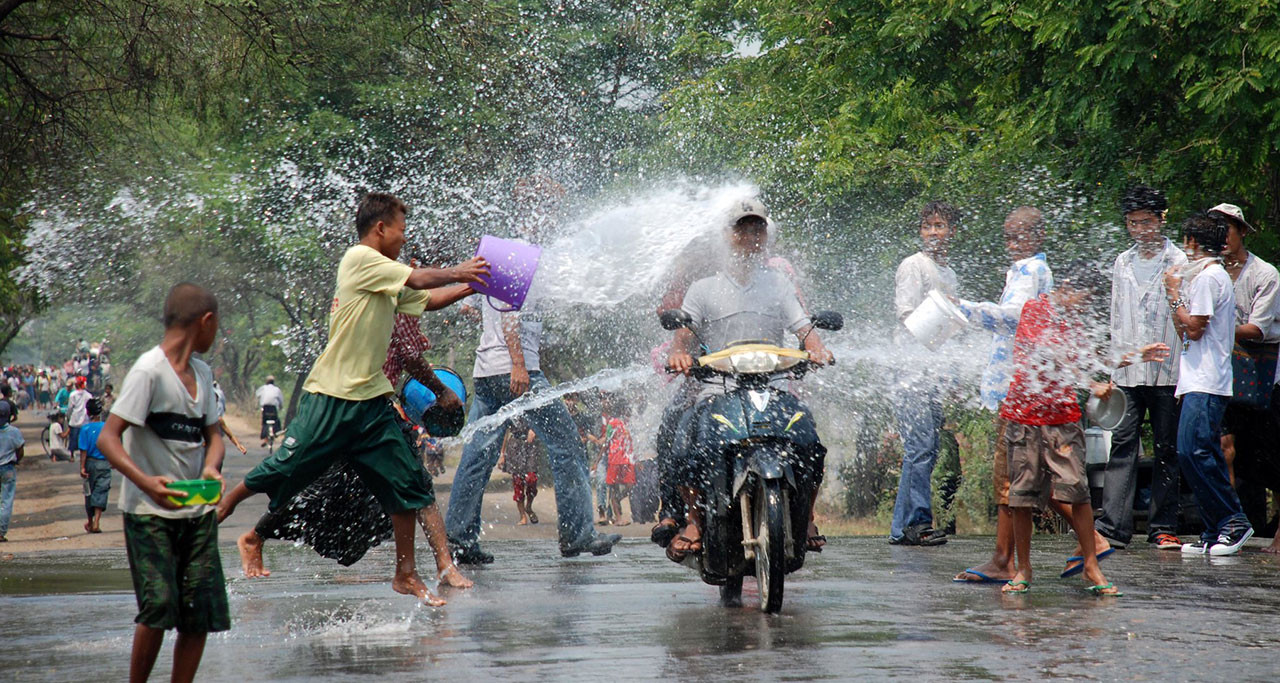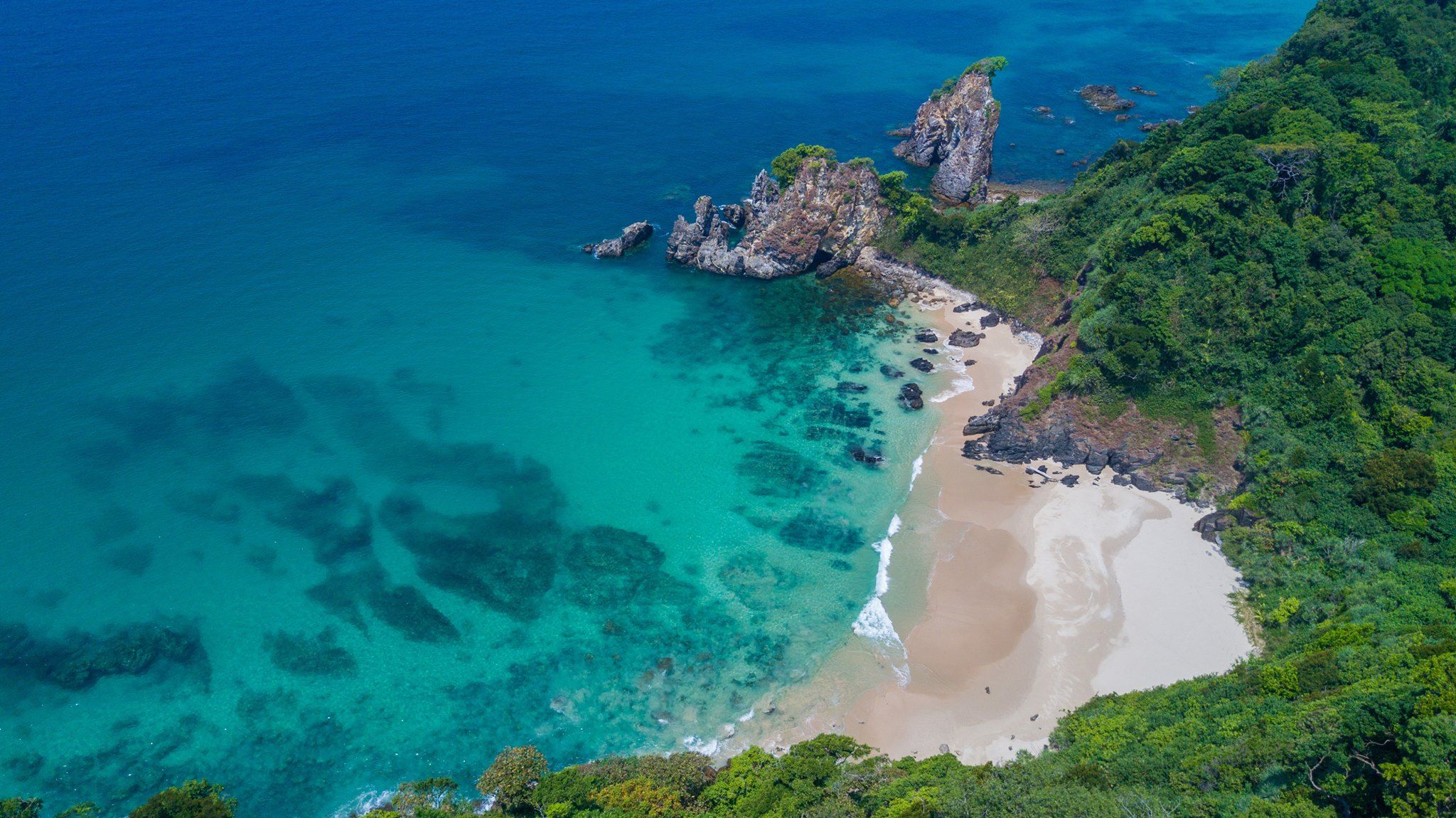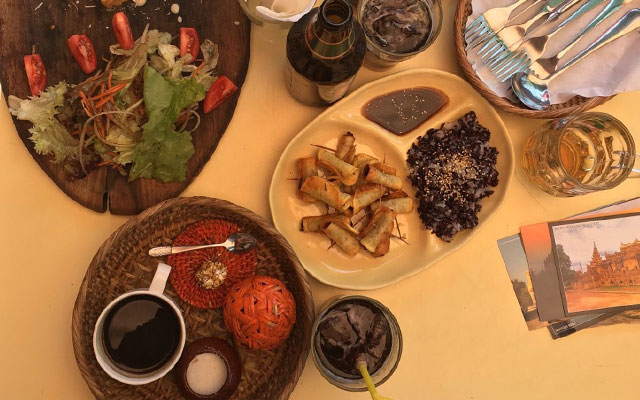Mandalay Weather

Mandalay Weather
Mandalay is one of main attractions in Myanmar. Choosing the appropriate time to visit Mandalay is one of the crucial factors to consider. How the weather likes in Mandalay? When is the best time to visit it? Let us answer these questions for you.
Table of Contents
1. Overview of Mandalay weather
Mandalay lies on 83m above sea level. The rain shadow of the Arakan Mountains is so powerful that the city qualifies as having a hot semi-arid climate, although it does border on a tropical wet and dry climate. Located in dry zone of the country, rainfall in Mandalay is little throughout the year.
Mandalay can be divided into three seasons: hot season, rainy season and cool season. Hot season is from March to May. Rainy season is from May to October. Cool season is from November to February.
Temperature
Average temperatures in Mandalay vary somewhat. Considering humidity, temperatures feel hot for most of the year with a very low chance of rain. The average annual temperature is 27.0 °C (80.6 °F). The variation in temperatures throughout the year is 10.9 °C | 51.6 °F.
The hottest months of year are April, May, and then June with the peak dropping in mid April when highs are regularly around 39.7°C (103.5°F). At night, temperatures rarely drop below 25.3°C (77.5°F).
The lowest average temperatures in the year occur in January, when it is around 20.4 °C (68.7 °F).
The highest reliably recorded temperature in Mandalay is 48.0 °C (118.4 °F) on 24 April 1975 while the lowest is 7.6 °C (45.7 °F) on 26 December 1999. There is considerably more diurnal temperature variation in the dry season than the wet season.
Rainfall
Mandalay receives about 812 mm (32 inch) of rainfalls annually. Precipitation is the lowest in January, with an average of 1 mm (0.0 inch). The greatest amount of precipitation occurs in September, with an average of 147 mm (5.8 inch). Between the driest and wettest months, the difference in precipitation is 146 mm (6 inch).
Humidity and Wind
Mandalay has some very humid months, with other moderately humid months on the other side of the year. The least humid month is March (42.1% relative humidity), and the most humid month is October (72%).
Wind in Mandalay is usually extremely calm. The windiest month is July, followed by June and August. July’s average wind speed of around 2.3 knots (2.7 MPH or 4.3 KPH) is considered “light air.”
2. Mandalay Weather by months
January
January is a moderately hot month, with average temperature varying between 13.3°C (55.9°F) and 28.6°C (83.5°F). In January, rainfall is little with about 4mm. Most days of month are sunny. Daytime is long with average length of day is 11 hours. The average relative humidity in January is 68%. This weather condition is really suitable for sightseeing and outdoor activities.
February
It is the last month of the cool season in Mandalay with average temperature fluctuating between 32.1°C (89.8°F) and 14.9°C (58.8°F). In February, the average high-temperature marginally rises, from a moderately hot 28.6°C (83.5°F) in January, to a hot 32.1°C (89.8°F). Rainfall still remains low (about 10 mm totally). The average relative humidity in Mandalay is 58%.
With such nice weather, travelers are highly recommended to take part in Mahamuni Pagoda Festival where Mandalay locals celebrate the full-moon eve of Thabodwe. They converge on the pagoda, home to a massive gold-encrusted Buddha statue. More devoted believers will stay for two full days to hear a Buddhist philosophical text read straight through by monks. Visitors can simply enjoy the festival on the grounds outside the temple with pavilions hosting traditional dances, musical performances, and local theater groups.
March
March becomes hotter than two first months of year, with average temperature ranging between max 35.8°C (96.4°F) and min 19.7°C (67.5°F). With an average relative humidity of 49%, March is the least humid month in Mandalay.
If you plan to come to Mandalay in March, you can join Shwesayan Pagoda Festival in Patheingyi Township. It takes half of hour to travel by car from Mandalay. The grand Pagoda festival is held yearly from the full moon day of Dabaung to the 10th waning moon. There are fairs on the pagoda platform and at the foot of the pagoda thronged with shoppers and colourful consumes. Visitors from various parts of Myanmar participate in the festival. This is a nice chance you can witness for yourselves the traditional culture and beautiful natural superb panoramic views of Upper Myanmar.
April
April, the same as March, is a very hot month in Mandalay. With an average high-temperature of 38.4°C (101.1°F) and an average low-temperature of 24.4°C (75.9°F), April is the hottest month of year. The average relative humidity is 50%. In April, during 3.3 rainfall days, 40mm (1.6″) of precipitation is typically accumulated.
Thingyan Festival in mid – April will help to take out of heat. Thingyan celebrates the end of the old year and the beginning of the New Year. People usually splash water on others as the ritual to remove all bad things. It’s an especially boisterous time in Mandalay, where the celebration has become virtually unrecognizable from its past traditions. In these places, cars and trucks full of young people, playfully throw water onto each other, the backdrop of water and celebration primarily serving to facilitate courtships.
May
The average temperature in Mandalay in May is at 31.2 °C (88.16 °F). Afternoons can be severely hot with average high temperatures reaching 36.9 °C (98.4 °F). Overnight temperatures are generally hot with an average low of 25.5 °C (77.9 °F).
As the beginning of rainy season, the weather in May is very faintly moist with intermittent rain. Some 144mm (5.7in) of fluid precipitates across an average of 8 days. The average relative humidity is 66%.
June
Weather in June is practically the same as in May. Temperatures range between 34.2°C (93.6°F) and 25.8°C (78.4°F). The average relative humidity is 73%. With 7.2 rainfall days, there is 116mm (4.6″) of precipitation in June.
July
Temperature and humidity in July are not much different from June. However, rain reduces a bit. Number of raining days is 5.9, with typically 83mm (3.3″) of accumulated precipitation.
In this month, travelers should not miss the Chinlone Festival, a unique and large-scale Myanmar sports event holding every year in Mandalay. The festival has been celebrated in the format of chin wine, in which a team of six players stayed in a circle with one standing in the middle. Many Mandalay residents went to the stadium to watch the performances, seeing a plethora of ways of playing cane ball. Chinlone represents a 1500-years-old sports game. It is also pertinent to the traditions, culture and history of Myanmar. Many young people play cane ball during their leisure time. In Buddhist festivals, chinlone is always played as a performance.
August
Weather in August does not change much compared to previous 2 months. The average temperature fluctuating between 25.2°C (77.4°F) and 32.3°C (90.1°F). The average relative humidity in August is 76%. In August, during 8.7 rainfall days, 136mm (5.4″) of precipitation is typically accumulated. If you are around Mandalay during August, I recommend you to attend some nat festivals. In Myanmar, the belief in Nat (Spirit) is one of the most important parts of the culture. The first one is Shwe Kyun Bin nat festival, hold in Mingun village and the second one is Taung Pyone Nat (Spirit) Festival. It takes a half of hour to travel to Myanmar to both villages.
In the festival, you will see traditional rituals of washing scared images. In addition, circus and cultural dances, music and magic shows, fortunetellers and tattoo shops will entertain you at any time. I am sure it will be an unforgettable memory.
September
In September, the average high-temperature is still hot, 33.1°C (91.6°F). The average low-temperature, in Mandalay, is 24.9°C (76.8°F). The month with the most rainfall in Mandalay is September when the rain falls for 8.1 days and typically aggregates up to 150mm (5.9″) of precipitation.
The Yadana Gu Nat Festival taking place in November is known as Mother of Taung Byone festival. One of the reasons why this event is enjoyable is the necessity of travelling to the festival site by boat. The festival is held each year to honour Medaw (Mother of the two Lords), Mewanna. During the festivals, boats carrying offerings and filled with dancers and musicians perform in homage to the nats ply the Ayeyarwady River near Mandalay and Amarapura. Most of the pilgrims are from Mandalay, Amarapura, Tada Oo, Sagaing and Monywa.

Boats carrying offerings and filled with dancers and musicians performing in Yadana Gu Nat Festival.
October
On average, it is maximum 32°C (90°F) in October in Mandalay and at least around 24°C (74.3°F). October is the most humid month in Mandalay, with an average relative humidity of 77%. In October, the rain falls for 6.8 days. Throughout October, 125mm (4.9″) of precipitation is accumulated.
Thadingyut (Festival of Lights) in October is Myanmar’s second most popular national festival, after Thingyan. It celebrates the end of the Buddhist lent, the three-month Buddhist period time, during which all monks and novices must remain in their temples and typically marks the end of the rainy season. At the south base of Mandalay Hill, the big temple festival at Kyauktawgyi Paya builds for two weeks beforehand. One day before the full moon, Kyaukse (25 miles south of Mandalay), the town of Kyaukse near Mandalay commemorates it a little differently: with a “Dancing Elephant” festival, populated not by real elephants, but by pairs of dancers in gigantic elephant costumes.
Dancers are awarded prizes for their dancing skills and the beauty of their costumes; the rest of the community celebrates with feasting and entertainments throughout the temple grounds.
November
November marks the beginning of cool season with the highest temperature at 30° C (86°F). In November, the rain falls for 2.8 days with 38mm (1.5″) of precipitation through the month. The average relative humidity is 74%.
November drops in Tazaungmone, the eighth month of Myanmar calendar. After Thadingyut festival, Tazaungmone comes with another lights festival named as Tazaungding, held on the full moon day of Tazaungmone. The celebration is marked by monk’s robe weaving competitions and parades, and lighting of candles set adrift on waterways.
December
December is very pleased month with average temperature ranging 28.2°C (82.8°F) and an average low-temperature of 14.8°C (58.6°F). December has low chance of rain. It is raining for 0.7 days, with typically 6mm (0.2″) of accumulated precipitation. December has the shortest days of the year in Mandalay, with an average of 10.8h of daylight. The average sunshine is 9h. Due to Christmas and New Year holiday in Western countries, December is always busiest month of tourists in Mandalay.
3. Best Time to visit Mandalay
Like most parts of the country, the best time to visit Mandalay is from November to February. During this time, the climate is comfortable and the rainfall is low, which is suitable for traveling.
Due to its location, even in the peak of rainy season, Mandalay only receives an average of about 9 days of rain. So, travelers can consider to visit Mandalay in rainy season as rain is not a big matter here. In rainy season, you can receive the advantage of low travel cost. Most of hotels in Mandalay offer a reduction of 50% of room rate. Air travel is also cheaper than it is in cool season.
However, as Mandalay is located in dry zone, it experiences hotter climate than other regions. So, you should avoid the intense heat of March and April if you are not familiar with it.






















